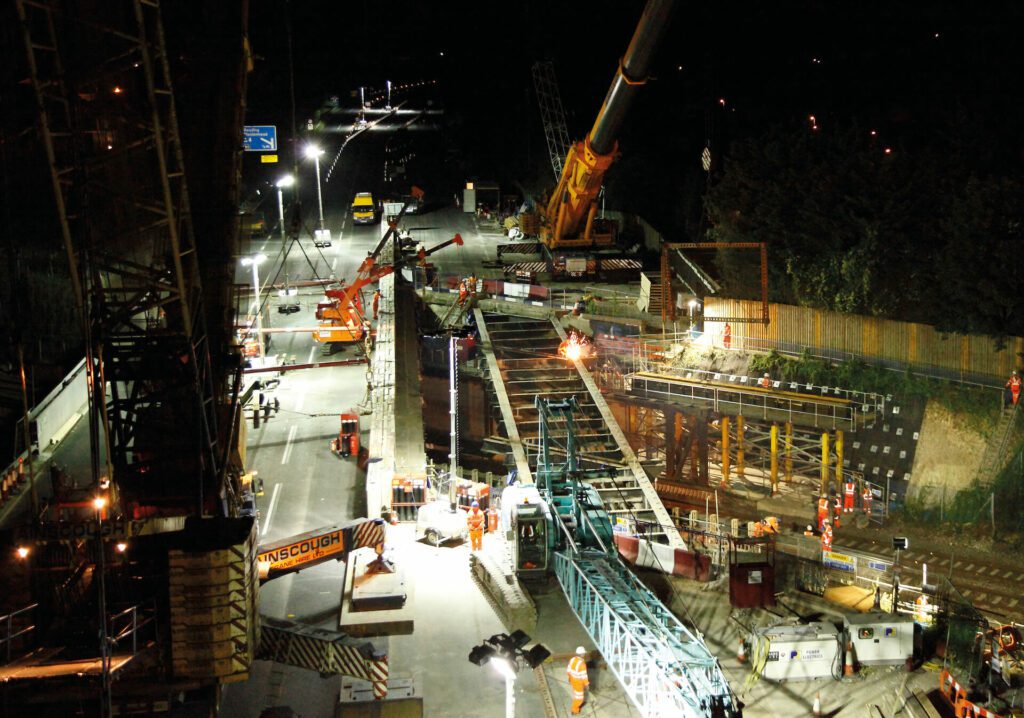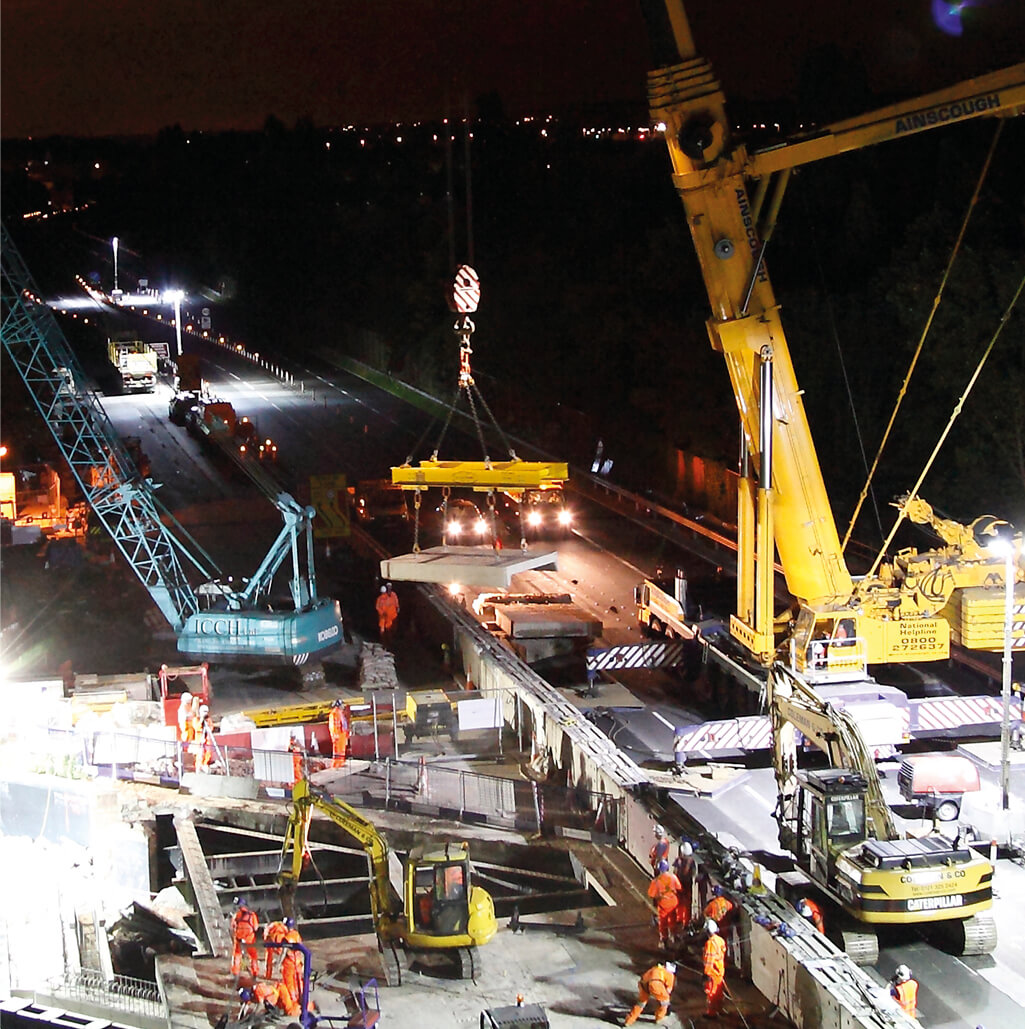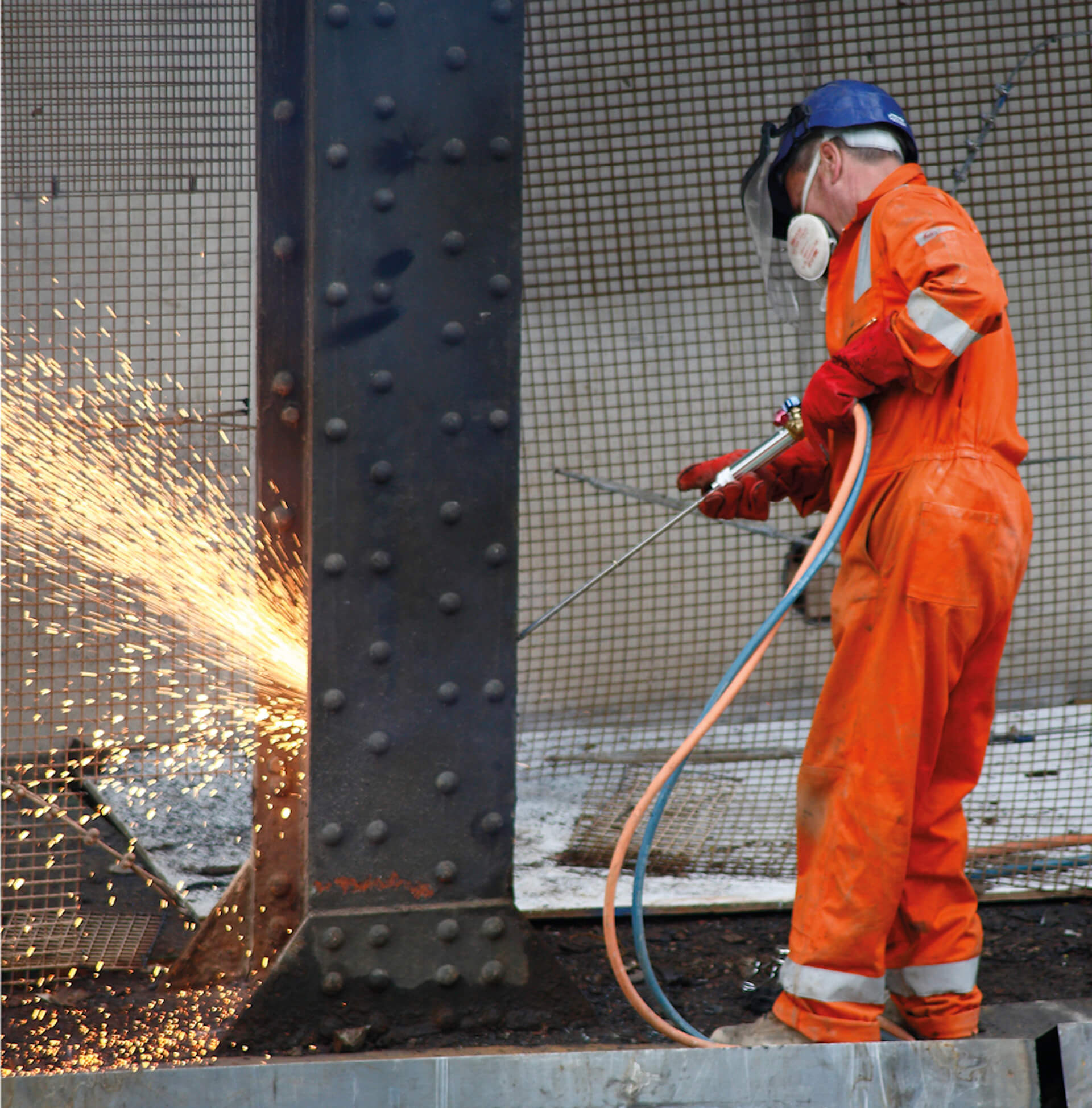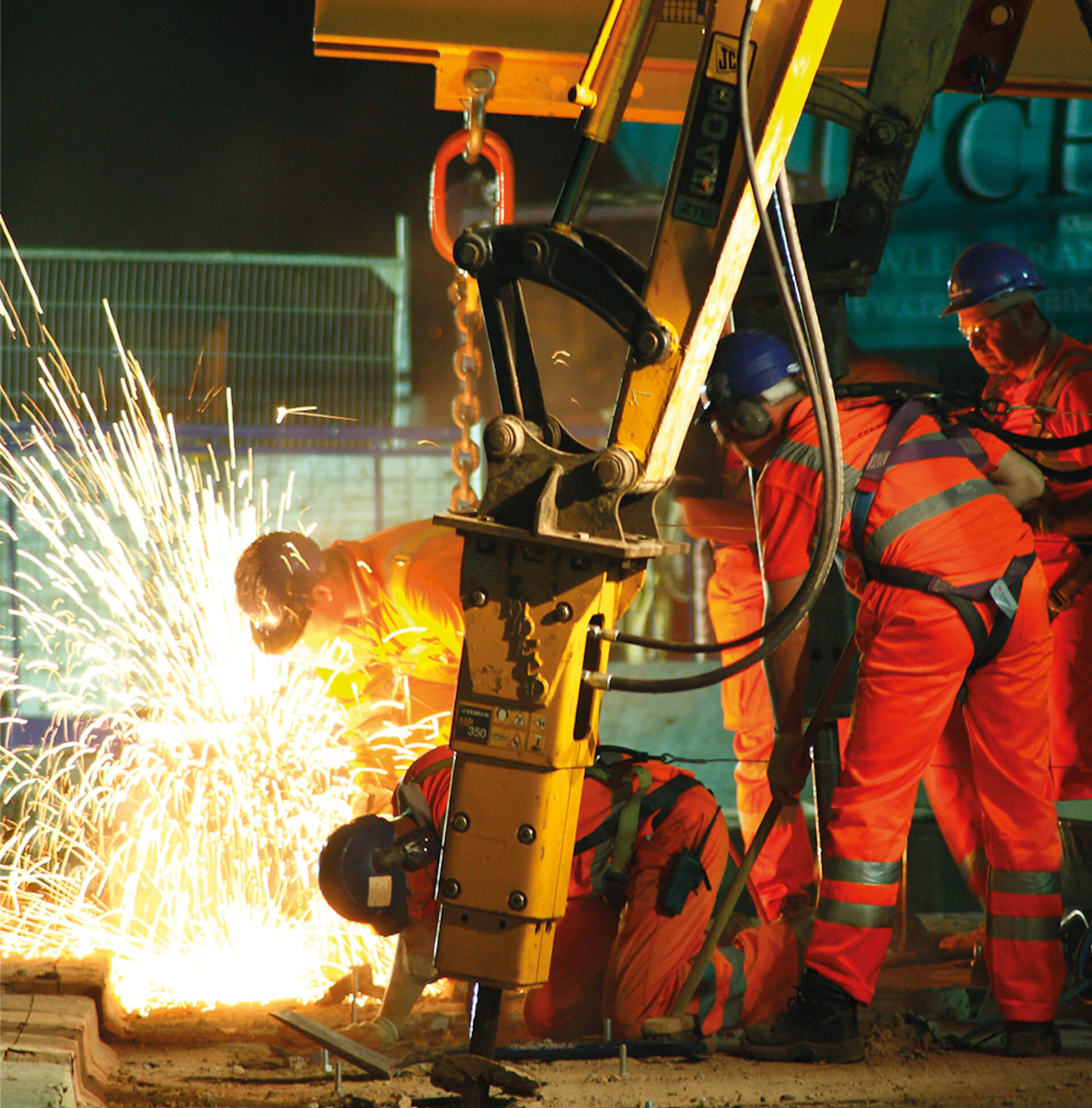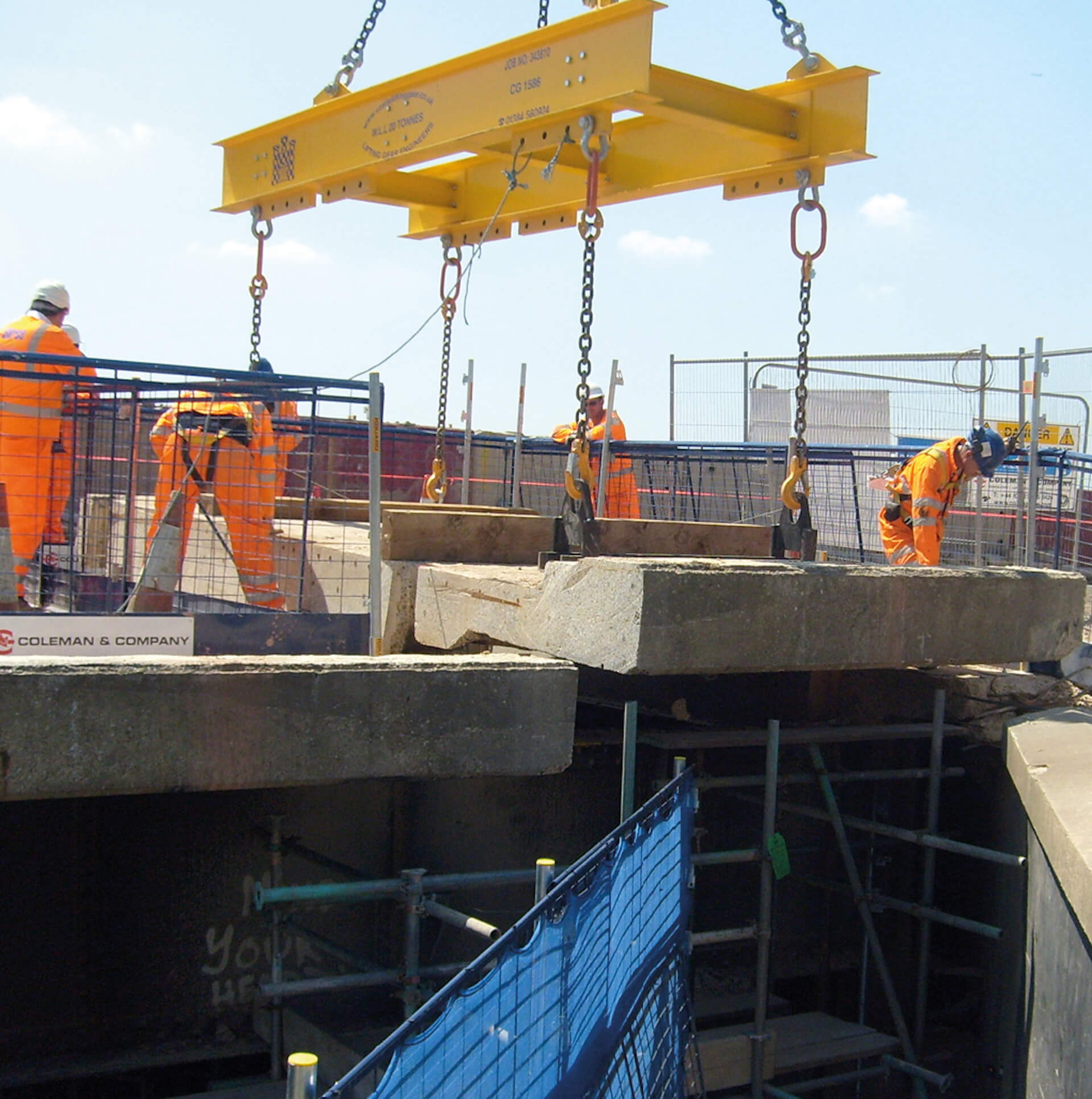Engineered solutions to deliver a complex bridge deconstruction
Colemans showed our bridge deconstruction and project engineering skills to complete the removal of the A404 (M) motorway bridge over Great Western Railway high speed four track, whilst maintaining the flow of motorway traffic and ensuring minimal disruption to Network Rail’s operations.
Complex project engineering and planning ensured the success of the project. Major demolition was limited to weekends and midweeks, enabling night closures of four-hour periods. All cranes had to be set up (including a 1,000 ton mobile crane), demolition works completed and all equipment cleared to allow the motorway and rail network to be reopened on time.
This proved to be an extremely challenging project where planning, communication and the implementation of the plan were key to each phase.
Learnings from each phase were vital in order to make improvements to the next sequence of complex dismantling activities.
High risks were involved when removing a structurally defective bridge under immense contractual liabilities, but the challenges were overcome by Colemans’ professional abilities and management controls.
Using our ‘demolition by design’ approach, a scheme was engineered to remove the bridge in stages. This involved deconstructing the bridge in longitudinal strips, working in harmony with the existing structure, allowing Birse Civils to slide the new bridge in behind each stage.
Due to structural and operational constraints, no heavy cranes or plant could work off the bridge structure, resulting in multiple plant working concurrently to remove up to 100 tonnes of concrete per hour overnight and still return the railway and highway to use at the end of the shift.
Cranes of up to 1,000 tonnes capacity, working at 40m lift radius using specially commissioned lifting equipment, successfully removed 1,200 tonnes of concrete over the duration of the project.
Throughout the works, as-built? information proved to be inconclusive and contained numerous errors. Our team had to adapt and modify design and methodology to overcome such issues, while adhering to the formal approval procedures and stringent contractual programme constraints.
Putting health and safety at the heart of the project design, our team took steps to mitigate risk of a scheme located in close proximity to an operational motorway and rail track. Health, safety and environmental objectives were agreed and displayed on the site noticeboard to aid communication and adherence. As part of the induction process, everybody connected with the works were asked to sign the objectives as a demonstration of their commitment to maintaining health, safety and environment excellence. A dedicated Health and Safety Manager was also appointed for the duration of the project.
No accidents or incidents were reported thanks to this comprehensive health and safety focus, and the programme was completed on time and on budget.


